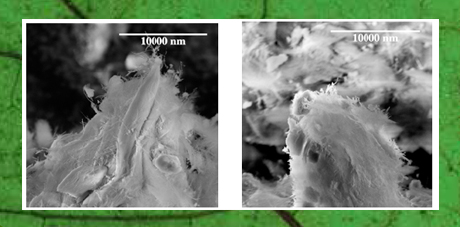
DeNOx at Biomass Combustion Plants
A new efficient deNOx catalyst was made by sol-gel synthesis resulting in a catalyst comprising amorphous vanadia on a high surface area crystalline anatase carrier.
Practically all combustion processes create nitrogen oxides (NOx), which are problematic in various ways in relation to human health. For well-established combustion processes like coal-fired power plants and gasolinedriven cars, selective catalytic reduction (SCR) technology for post-combustion removal of NOx (or deNOx) has been developed and optimized. However, these catalysts are not ideal for deNOx at biomass combustion plants. The main problem is the content of alkali in biomass. Alkali severely deactivates traditional deNOx catalysts in a matter of weeks. Especially as many nations, including Denmark, plan to expand the use of biomass combustion, it is essential to develop suitable solutions to this problem. This thesis presents an optimized version of a new type of nanoparticular vanadia deNOx catalyst.
The nanoparticle catalyst was made through one-pot sol-gel synthesis resulting in a catalyst comprising amorphous vanadia on a high surface area crystalline anatase carrier. Due to the high surface area, loadings of 20 wt.% vanadia could be obtained without exceeding the vanadium oxide monolayer coverage. The catalyst proved highly active – corresponding to a factor of 2 compared to an industrial reference.
Even at high vanadia loadings the catalyst did not show any sign of increased SO2 oxidation, compared with a low vanadia industrial reference catalyst. Furthermore, long-term activity measurements at normal operating temperature revealed that the catalyst did not display any sign of deactivation.
The catalyst showed very high resistance towards potassium poisoning maintaining a level of activity 16 times higher than an equally poisoned industrial reference catalyst, A catalyst plate was synthesized using 20 wt.% sepiolite mixed with nanocatalyst, supported by a silica-fibre mesh. Realistic potassium poisoning was performed on the catalyst plate by exposure in a potassium aerosol for 632 hours at 350°C. Owing to physical blocking of potassium by sepiolite fibres, the composite catalyst showed a further increase in potassium resistance compared with the unsupported catalyst.
Finally, a refined mechanism was proposed for the nanoparticle catalyst explaining in-situ Fourier Transform Infrared (FTIR) observations. Most importantly, it indicated that the V=O bond did not break during the catalytic reaction, suggesting that another oxygen is responsible for the activity of the active vanadia site.